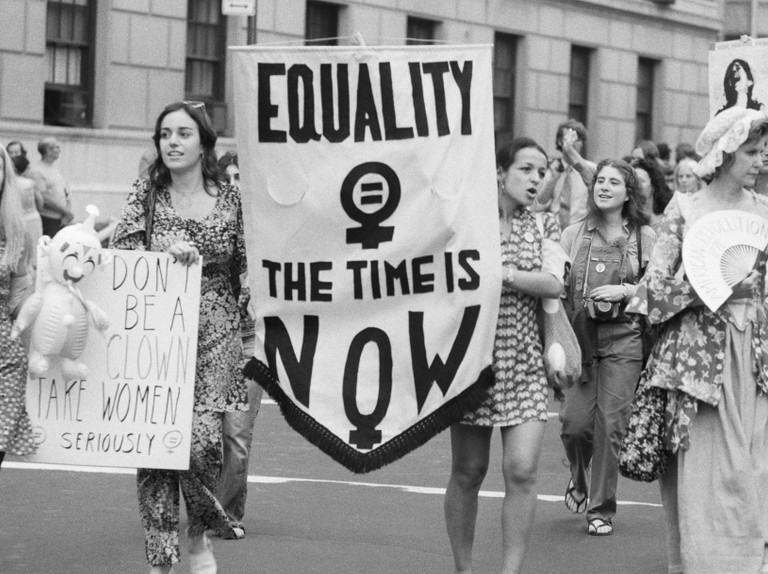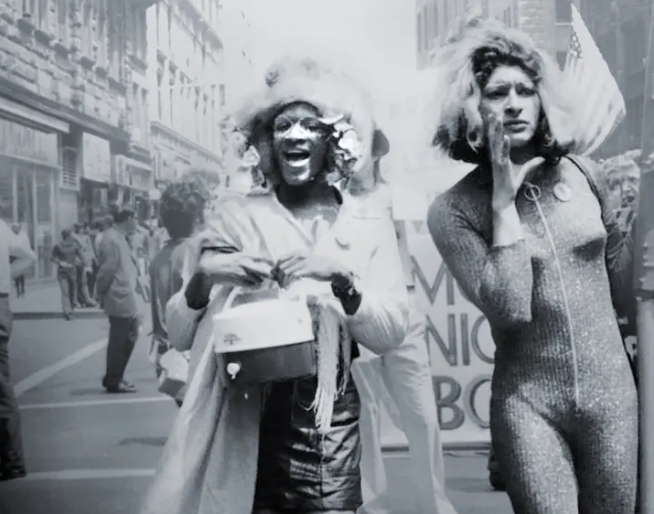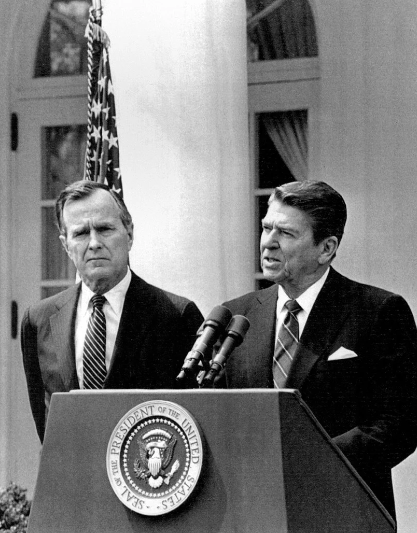As we get to the 1980s in the U.S., the fight for civil rights for people of color and the struggles for sexual freedom, LGBTQ+, and women’s rights are already decades underway. These movements come head to head with shifting political ideologies and the devastating HIV/AIDS crisis.

Feminism: The “Second Wave”
The feminist movement in the U.S. began it’s “second wave” in the 1960s and continued through the early 90s. Largely influenced by Betty Friedman’s bestselling book, The Feminine Mystique (1963), women banded together to protest social and cultural inequities for women and call for legislation to support women’s rights. Some of the top issues included protections from workplace harassment and rape, reproductive rights, and financial freedoms like accessing credit cards and loans.
The Civil Rights Act of 1964, while focused on race, outlawed employment discrimination based on sex as well. That, coupled with the 1963 Equal Pay Act, helped catapult the movement’s momentum. The passing of Title IX in 1972 and Roe v. Wade in 1973 were also legislative victories for feminists.
While the Second Wave was successful in regards to legislation and significant social changes, women of color felt under-represented and at times excluded by the feminist movement’s narrative. Out of this frustration, the Third World Women’s Alliance was born.

Gay Liberation
The early 20th century saw several attempts at building and legalizing gay and queer culture and community, but most of these efforts were shut down by government policies and societal pressures influenced by the medical field’s classification of homosexuality as a psychiatric disorder. It wasn’t until the 1950s and 60s when some LGTBQ+ activists started gaining some traction by forming social organizations and combating police discrimination.
The Stonewall Riots of June 1969 are considered the launching point for the LGTBQ+ rights and sexual liberation movements in the U.S. by most accounts. It highlighted the fact that assimilating “homosexuality” to fit into a heteronormative culture was no longer the goal, but rather, a radical acceptance of freedom of sexual identity and orientation and the rights (and pride) to go with it.

Politics in the U.S.A.
President Ronald Reagan was sworn into office on January 20, 1981 and would serve two full terms, leaving office in 1989. He ushered in an era of conservatism that revived the Republican party, partly by catering to religious fundamentalists who felt that the feminist movement and gay liberation movements of the previous decade were destroying “traditional family values,” as well as Americans in support of more limited government after the Vietnam War and the Watergate scandal.
Reagan and his administration ignored the AIDS epidemic for years, even as thousands of Americans were dying. His press secretary laughed and joked about the killer disease when asked about AIDS during press briefings. Reagan did not publicly acknowledge HIV/AIDS until 1985 (after his reelection). Many blame the adminstration’s lake of urgency and late response to the crisis for the devastating loss of life during that first decade of the epidemic.